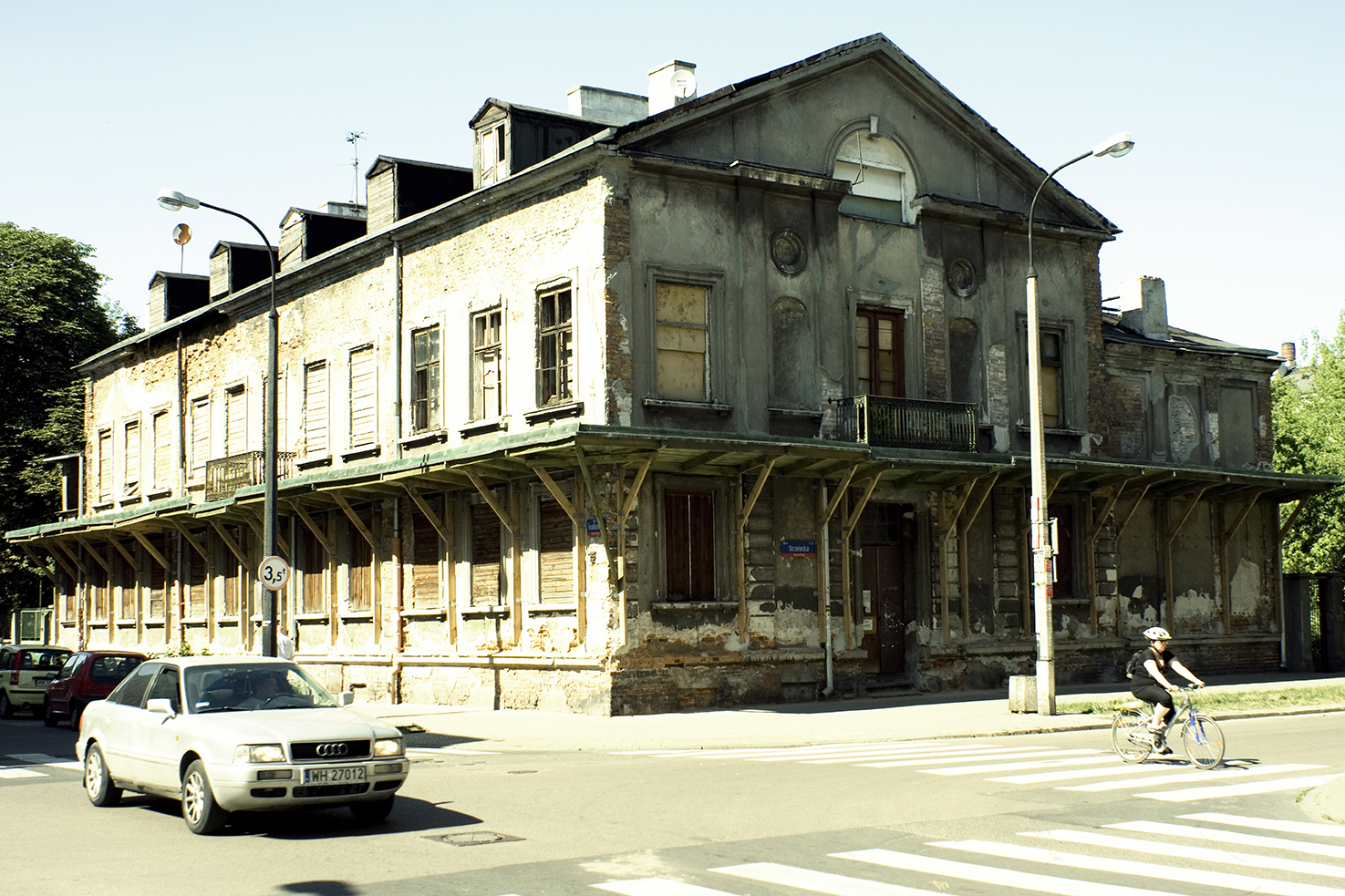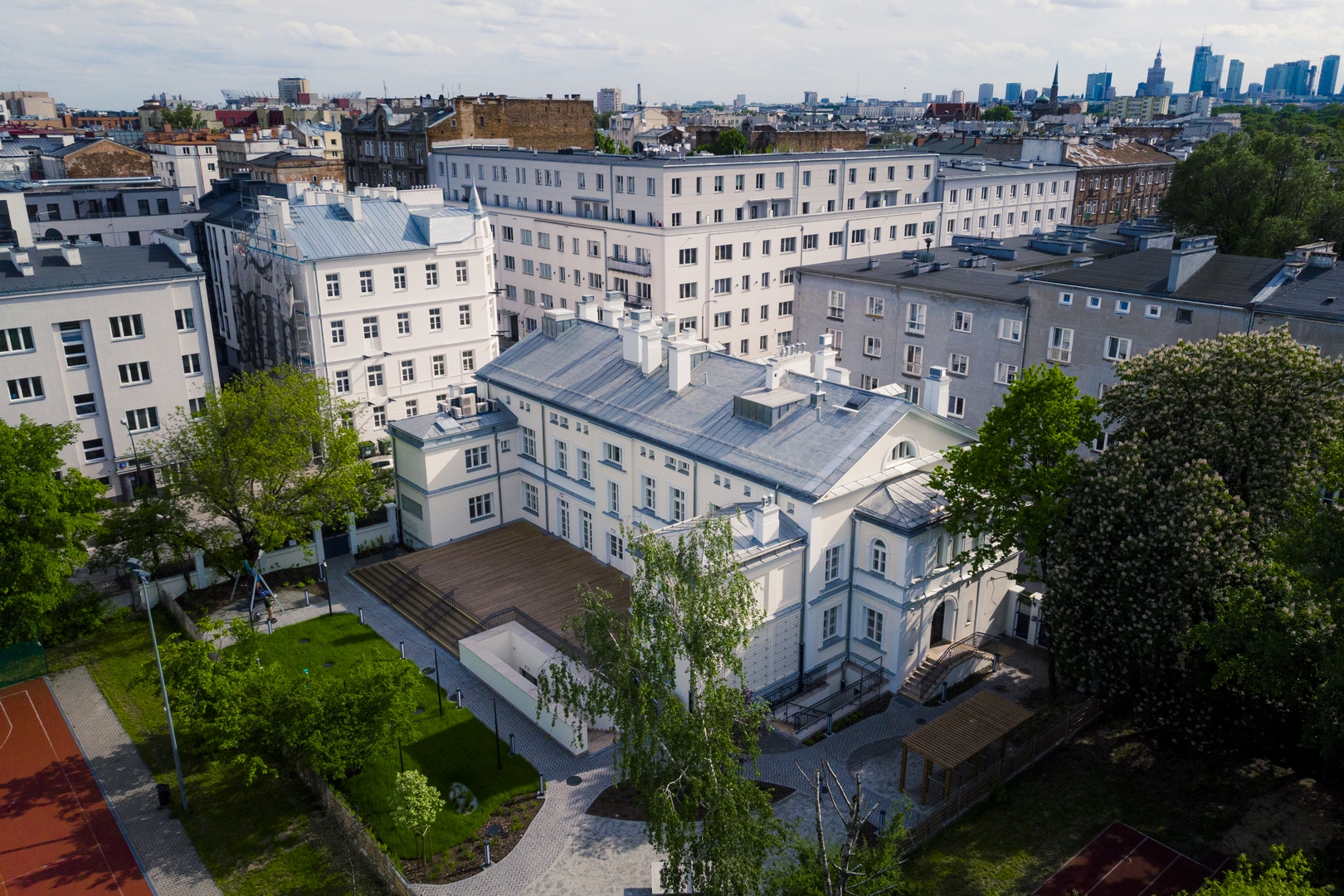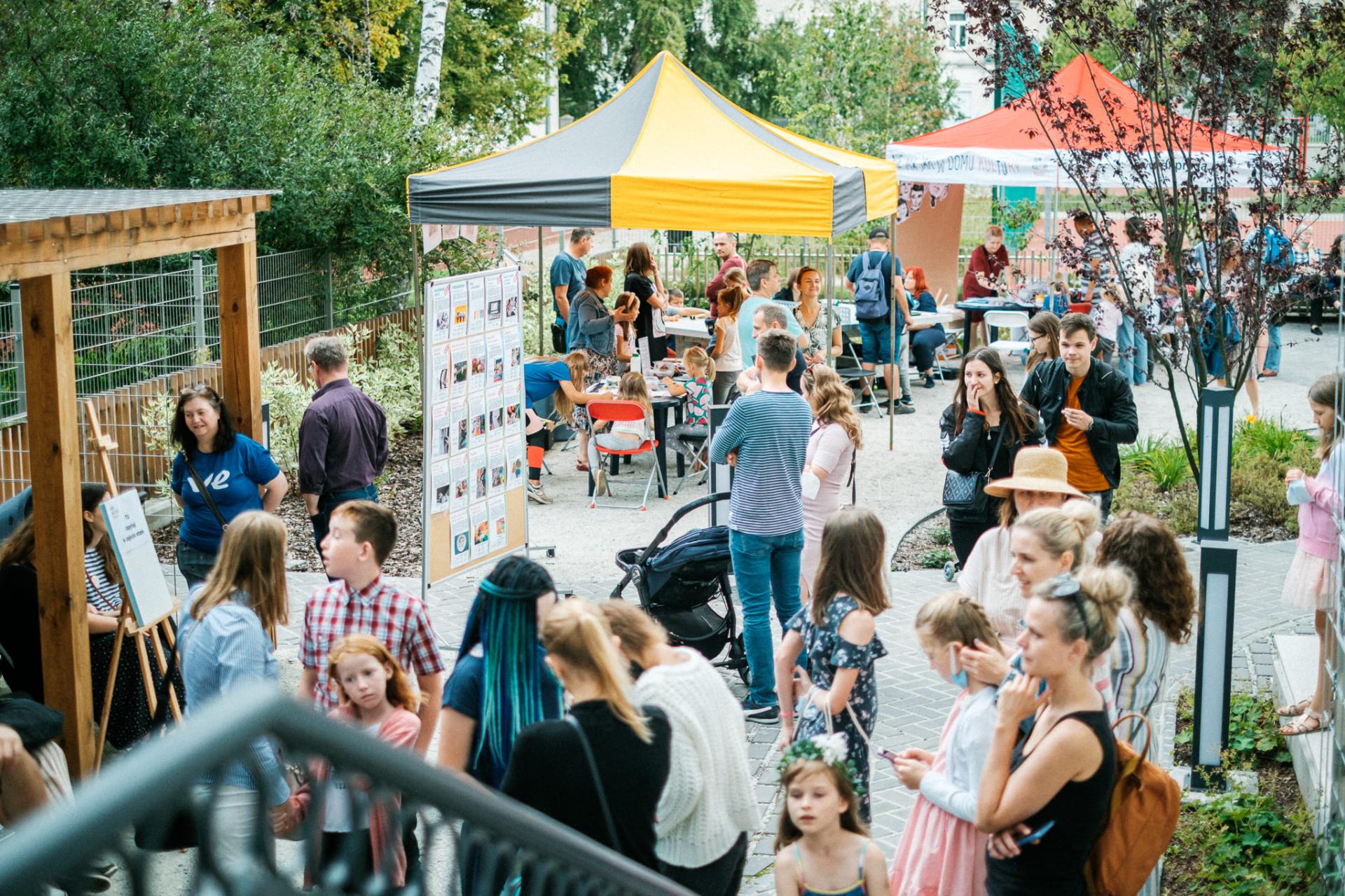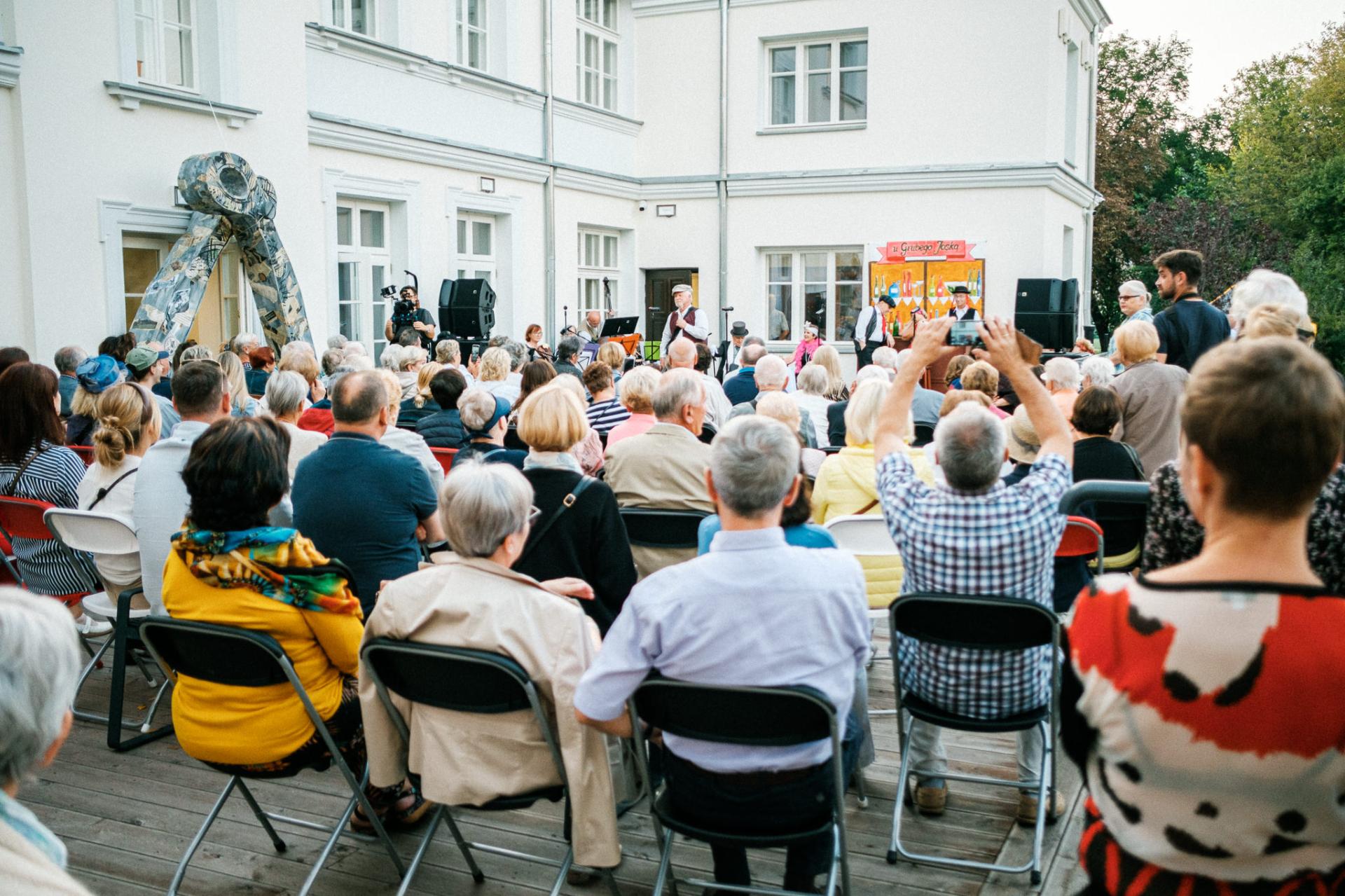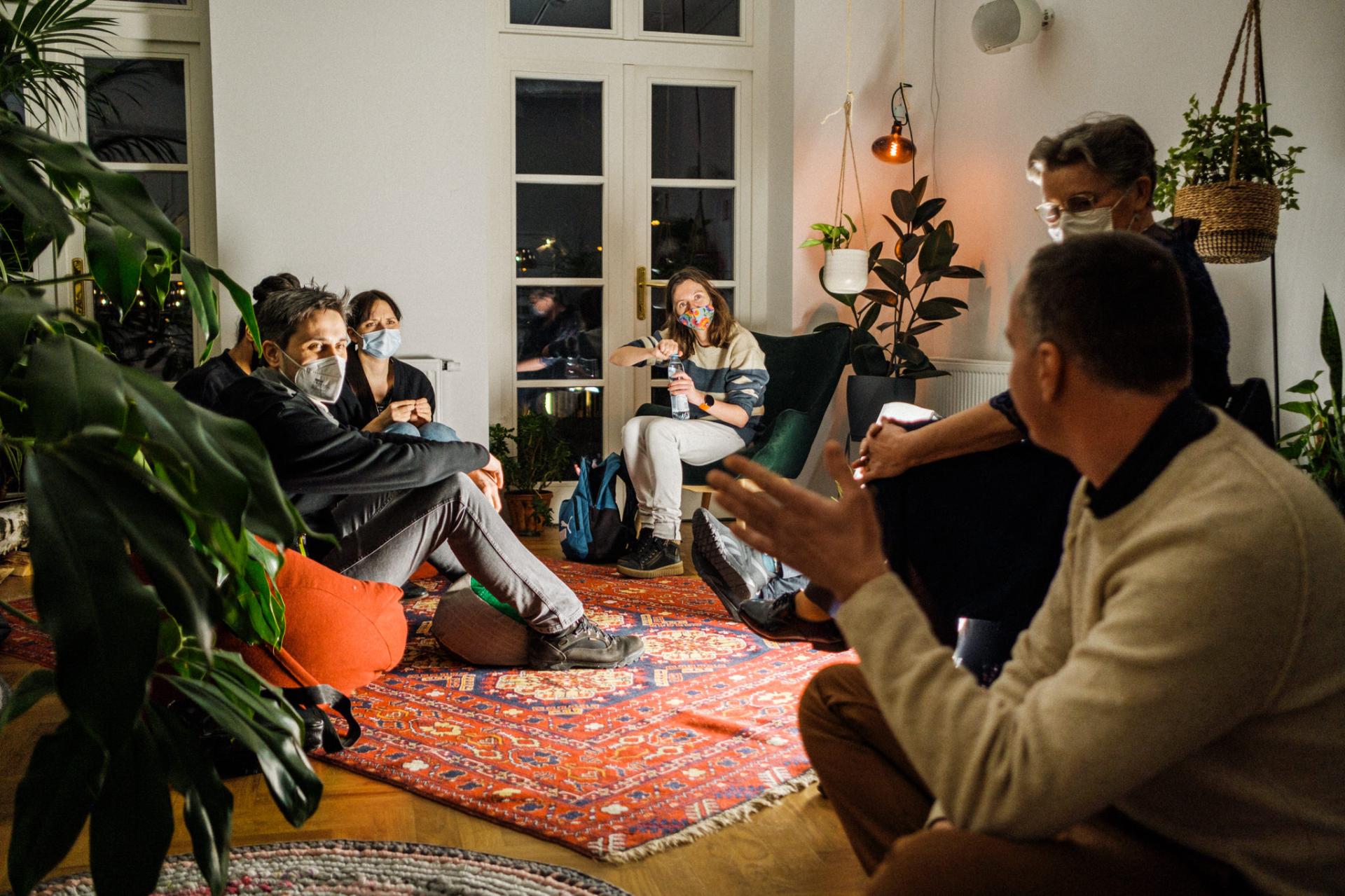Konopacki Palace Renovation
Basic information
Project Title
Full project title
Category
Project Description
Konopacki Palace is a place of culture. Once a classical mansion built for its owner in the 19th century, preserved the two world wars, served as public housing, schools and kindergartens, till it slowly went to rack and ruin and was shut down in the early 2000s.
Brand new and fully renovated is now a great place to be. Open to the public, full of music, dance and laughter brings joy to the local community and is a symbol of Praga-North, district which changed a lot thanks to revitalisations.
Geographical Scope
Project Region
Urban or rural issues
Physical or other transformations
EU Programme or fund
Which funds
Description of the project
Summary
Konopacki Palace is one of the oldest brick buildings in Praga-North, district of Warsaw. Initially the house of Ksawery Konopacki, a founder of a settlement called Nowa Praga. Back in the 19th century it was a classical mansion divided into apartments of its owner and flats for rent, then possessed by Russian prince general Wachwachow, followed by Jewish entrepreneurs, until it was changed into public housing. Konopacki Palace preserved two world wars, served as public housing, schools and kindergartens, till it was completely shut down in the early 2000s due to the danger of collapsing.
Slowly, year by year, the mansion began losing its shine. Local activists, artists and community have enlivened the surroundings of the palace to show the burning problem of losing Warsaw's heritage. After years of struggle, they have finally won the fight and the renovation of the Konopacki Palace has started. Conversations with neighbours and surveys led to the conclusion to create a place for the local community – culture centre.
Since 2021 the Konopacki Palace has been a place to be. Place for neighbours and local community where everyone is welcome and can develop skills by attending workshops or lessons, share passions, listen to the concerts, watch performances, cook with friends or just simply enjoy the peacefulness of the 19th century mansion.
Key objectives for sustainability
The main objective of the project was to adjust the Konopacki Palace to the modern times. The building left alone for years was becoming a ruin in the early 2000s, with no windows, sewage or running water. While in use, it was heated by a coal furnace but it was still cold in the winter because of leaky windows and no building insulation. It was visible that no bigger renovations had been done for decades. The easiest way to deal with the problem would be to demolish the building and build a new construction. That would be though a great loss not only for Praga-North but for whole Warsaw which lost hundreds of buildings during World War II.
It was crucial to restore the building in a way that it could be both aesthetic and functional once again. To make it more environmental-friendly. To prevent heat from leaking, get rid of the old coal furnace and connect to sewage and water systems. To bring the place back to life and give it to the local community. To restore a monument of which Praga-North can be proud. To connect heritage with present functionality.
Key objectives for aesthetics and quality
The key objective of the project was to restore the Konopacki Palace to its former, 19th century glory. It was being built in the 1861–1866 period as a classical mansion. After World War II the building was going slowly to rack and ruin. Konopacki Palace was a place for public housing (a part of the building was divided into flats) and public services – kindergartens and schools. For years nobody wished to renovate the Konopacki Palace. The walls still remembered World War II and had holes from bullets shot during the fight. In the beginning of the 2000s it was impossible to use the place any more. Konopacki Palace was just one of many destroyed buildings in Praga-North.
Konopacki Palace has undergone a complete renovation. After almost 15 years of non-use the following procedures have been executed:
External changes (incl.): a) new wooden windows, b) fabrication and supplementation of window frames, avant-corps, cornices and facade rustication, c) the new balcony stone balusters, d) new entrance doors, e) new gate and steel fence according to a specific pattern referring to the style of the era with plinths and posts, f) new floor arrangement in the courtyard, g) new roof and roof insulation, h) chipping down existing external plasters, applying new ones – white, etc.
Internal changes (incl.) a) installation of an elevator b) full conservation of brick walls, c) conservation and renovation works of floors, stairs, restoration of the ceiling and walls, staircase, windows and doors. Floors and stairs designed using new materials. Compositional materials refer to the original layout, i.e. a rich bourgeois house. Walls plastered using traditional methods – cement-lime plaster, d) re-creation of balustrades and stairs on the basis of existing elements, etc.
Key objectives for inclusion
The key objective of renovating the Konopacki Palace was to involve the local community to express their needs and ideas of having a place created for and with neighbours. Once the decision of restoring the historic building was made, it was widely discussed and one of the plans was to open a museum. Luckily it was withdrawn and led to a social survey which showed a need of forming a space for the local community. The survey was carried out between March and June 2016 where the interviewees were asked how they would see the Konopacki Palace in the future. They were given the floor plans of the building where they could have placed the different kinds of workshop spaces (i.a. pottery workshop or music studio), gallery of art made by the locals, performance hall or kitchen opened for the public. Inhabitants of Praga-North were working together with the architects to set up the best solution to create the ideal cultural centre, where they can not only develop their artistic skills or go to a gig but also meet with friends, cook with the others or raise plants in the garden located in the backyard of the building. Importantly, they can also develop and implement their own ideas and activities as a part of community-based programmes.
Equally important objective was to make the place as accessible and affordable as possible. In order to facilitate access for persons with disabilities the special lift for wheelchairs, tactile signs, induction loop, etc. were installed. The idea behind community centres is that culture should be more affordable to the public, which is why many cultural events or workshops have a small fee or no fee. That is also what was stated during the survey and was the key objective of the project.
Results in relation to category
The main results of the project were creating a place for the local community to fulfil their cultural needs, make experiencing culture easier, accessible and affordable, and restoring a local monument which history leads back to the 19th century and was one of the first brick houses in Praga-North district. The de-industrialised right bank of Vistula River which was rapidly experiencing gentrification is now starting to be more sustainable. It is seen that the renovation of the buildings cannot exclude the former inhabitants and their role in the local community. They are usually the ones who carry the history of the past; who were eye-witnessing the changes of the district. They are still important in building the cultural identity of the place.
Konopacki Palace renovation is a great example of turning a monument into a place opened to the public, where one can be proud of local heritage. The other visible result is a number of people attending the cultural events held in the Konopacki Palace and visitors who just spend their time with families or friends in a cosy atmosphere of a 19th century mansion. Another outcome is creating a space for people with disabilities or struggling with social issues such as poverty, or alcohol or drug abuse. They are now offered new ways of spending free time where they can develop artistic skills or share their passions. We have e.g. theatre workshops for persons with disabilities, LGBTQ+ choir or hip-hop artists. We connect old with new and new with old.
How Citizens benefit
Without help of local activists, artists and inhabitants of Praga-North district it would be impossible to begin renovating the Konopacki Palace. The first impulse to start thinking about an abandoned building was an international project "the KNOT" (called an experiment on collaborative art in public urban spaces). It took place in three cities: Berlin, Warsaw and Bucharest. The post-industrial Praga-North in Warsaw was the best place to choose. District where the ongoing gentrification was truly visible. Many have seen the Konopacki Palace - just a few paid attention. The KNOT's actions were the breakthrough. They not only have started to liven up the surroundings of the Konopacki Mansion by using art (it was dangerous to enter the house) but started a debate about the forgotten building. Artists and architects proposed several concepts of renovating the place and its further purpose in the future. One of them was to create a culture centre. Local activists have created a group called PRECEL which urged the city council to focus on the Konopacki Palace. It led to a social survey which was held in cooperation with workers and director of the Cultural Centre "Praga" in 2016. Local community was asked about their cultural needs and their opinion of running the place. They all agreed on creating a space open for neighbours where they can meet and develop their passions.
Konopacki Palace as the Cultural Centre "Praga" was opened first in September 2021. From the beginning, even during the worst pandemic's lockdowns, it is opened to the public and welcoming every visitor. Local communities can meet and fulfil their culture needs by attending different workshops or doing their own projects. Institution welcomes NGOs and local leaders to collaborate. A few projects already occurred and started a long-term relationship between the Konopacki Palace and several institutions in Praga-North.
Physical or other transformations
Innovative character
In terms of innovation, the project was held in constant dialogue with the local community. It was both architecturally and functionally prepared for the inhabitants of Praga-North who were talking with architects and employees of Cultural Centre "Praga" to create an ideal place for the locals. The interviewers were discussing the future of the Konopacki Palace in the streets and showing interviewees a building's portable mockup which consisted of 4 floors and was possible to open and see what was inside. Another issue was to see the monuments of deteriorating Praga-North as a value and heritage which can be a common good for the society. It was important to keep the historic building open for the public and accessible for everyone.
Learning transferred to other parties
Many parts of the project can be transformed to other parties. The most important is to focus on postindustrial and often deteriorated districts seen in various cities monuments destroyed but important to the community can be hidden. It is crucial to value the worth of the buildings and fight for getting them back to the city structure. The ideal solution would be to do it in agreement with the local community, artists, authorities and activists to understand their needs and ideas. Nowadays many tenement-houses in Poland are being renovated to sell them to the new upper-class. Investors are getting rid of the whole interior, leaving just the facade. Many of them don't ask the community about their needs or expectations. It leads to small, over-priced flats built with cheap materials. The renovation of the Konopacki Palace shows that the idea of restoring a monument back to the city can be different. Even though debates about the building took place and one of the further plans was to open a museum, inhabitants of Praga-North have decided that the Konopacki Palace should be a culture centre.

